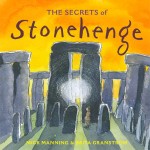I have always been fascinated by history. My eight year old is following in my footsteps. She is endlessly fascinated by people, their relationships and lives – in other words, their stories. For her history is a treasure box of people all in very different circumstances and the stories of their lives.
We use a lot of books to study history – many borrowed from friends or the library. But even so we have an ever growing collection of children’s history books. As with all educational resources we have found it vital to match the book, or programme or what ever to the child. So whilst another child might enjoy books with pictures of things or facts for my daughter it is all about people’s lives. The best history for her is presented as a form of storytelling. So we are always on the look out for history that is well written, with a good flow to the words and focused on people.
We use a mix of childrens resources and adult books which I use to expand my own knowledge to introduce ideas into conversations.
Books
World history:
Story of the world
A set of four books exploring world history through a narrative. These are part of the highly structured Classical Education system The Well-trained Mind. The system is far too adult-directed, and structured for us, but many home educators use the story books, as just that – story books. It is comprehensive, possibly a little overwhelming so for my daughter, who has never clicked with any but the first chapter. It has good international coverage, though the balance is rather skewed towards Judeo-Christian traditions for my tastes.
A Little History of the World
A beautiful narrative. This book focuses more on history of western world. More concise than Story of the World. If you only read one world history book this should probably be it. Suited to the older child or for adults as a basic history book.
English history:
My daughter is fascinated by Kings and Queens and their lives. So initially we focused on English history and the monarchy. Her absolute favourite book is Tony Robinson’s Kings and Queens. It is funny, and full of personal details that bring historical characters to life for her.
Factual books:
My daughter initially found most of the factual historical books too dry. I think that more will become interesting for her as she gets older. But a couple of series do stand out.
She really enjoys the Horrible Histories books. As an adult they seem a little too focused on the nasty side of life, but they provide a great introduction to everyday life in different historical periods.
One of our favourite publishers Book House produces the Danger Zone series – beautifully illustrated, highly entertaining and with books for many different periods (60 books all together!).
We have searched long and hard for good general
Historical fiction:
My daughter’s favourite genre is historical fiction. There are some great children’s historical fiction books out there ranging from picture books to teen books. (I recently read the stone age series Chronicles of Ancient Darkness for my own entertainment.) Here are a few of our favourites:
There are a number of series we like:
- Tales of the dead – Whilst predominantly visually stunning factual books these include include a graphic story through the pages
- Historical Stories – Historical fiction for younger readers
- Sparks – A large series of historical fiction for younger readers
- Terry Deary – Author of Horrible Histories has written historical fiction but we find these rather flat. We much prefer the sparks and historical stories.
- Viking Vik – a series for younger readers about a viking boy
Historical biographies:
Historical biographies aimed at younger children read very much like fiction.
Usbourne readers have some good titles in their Famous Lives series, our favourite being Marie Antoinette.
I also find that I am reading more historical biographies – on the look out for interesting people that my daughter might be interested in.
This is just a quick round-up of some of the books we enjoy. Some we own – others are borrowed from the library – some of them time after time. There are many more to be added to the list. And many more other resources we use for history including TV programmes, music and museums.





